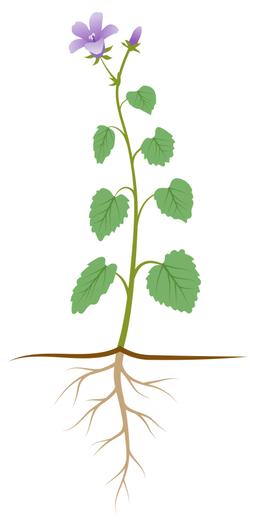Myths about teaching can hold you back
- Year 9
Cellular respiration
I can describe what cellular respiration is and explain why it happens in all living organisms all the time.
- Year 9
Cellular respiration
I can describe what cellular respiration is and explain why it happens in all living organisms all the time.
These resources were made for remote use during the pandemic, not classroom teaching.
Switch to our new teaching resources now - designed by teachers and leading subject experts, and tested in classrooms.
Lesson details
Key learning points
- Cellular respiration is a chemical process that uses glucose, from food, as a fuel to provide energy for life processes.
- Examples of life processes that require energy from cellular respiration.
- Cellular respiration happens in all living organisms all the time to provide the energy to keep them alive.
- Differences between breathing and respiration.
Keywords
Cell - A cell is the smallest living building block of an organism.
Cellular respiration - Cellular respiration is a chemical process that uses glucose, from food, as a fuel to provide energy for life processes.
Glucose - Glucose is a sugar that our cells use as fuel for cellular respiration.
Breathing - Breathing is the process in which air is moved in and out of the lungs.
Mitochondria - Mitochondria are cell organelles in which cellular respiration takes place in animals and plants.
Common misconception
Thinking that only animals respire, and that plants only photosynthesise (and do not respire).
This lesson uses examples of plants respiring in order to address this misconception.
To help you plan your year 9 science lesson on: Cellular respiration, download all teaching resources for free and adapt to suit your pupils' needs...
To help you plan your year 9 science lesson on: Cellular respiration, download all teaching resources for free and adapt to suit your pupils' needs.
The starter quiz will activate and check your pupils' prior knowledge, with versions available both with and without answers in PDF format.
We use learning cycles to break down learning into key concepts or ideas linked to the learning outcome. Each learning cycle features explanations with checks for understanding and practice tasks with feedback. All of this is found in our slide decks, ready for you to download and edit. The practice tasks are also available as printable worksheets and some lessons have additional materials with extra material you might need for teaching the lesson.
The assessment exit quiz will test your pupils' understanding of the key learning points.
Our video is a tool for planning, showing how other teachers might teach the lesson, offering helpful tips, modelled explanations and inspiration for your own delivery in the classroom. Plus, you can set it as homework or revision for pupils and keep their learning on track by sharing an online pupil version of this lesson.
Explore more key stage 3 science lessons from the Breathing and respiration unit, dive into the full secondary science curriculum, or learn more about lesson planning.

Licence
Prior knowledge starter quiz
6 Questions
Q1.Starting with the smallest put these in size order.
Q2.Which gas do humans need from the air that we breathe in?
Q3.Where in the human body does gas exchange take place?
Q4.Order the path of air entering the lungs.

Q5.Match the word to its description.
This causes air to move into the lungs.
This causes air to move out of the lungs.
Q6.True or false? Humans obtain glucose for respiration by eating carbohydrates.
Assessment exit quiz
6 Questions
Q1.Common life processes require energy from respiration. Which processes take place in all living organisms?
Q2.What of these are reactants of cellular respiration?
Q3.Complete the sentence by matching the location to its description.
is where respiration takes place in plants and animals.
is where respiration takes place in bacteria.
Q4.When does cellular respiration take place?
Q5.True or false? Plants can breathe.

Q6.Who is right?






